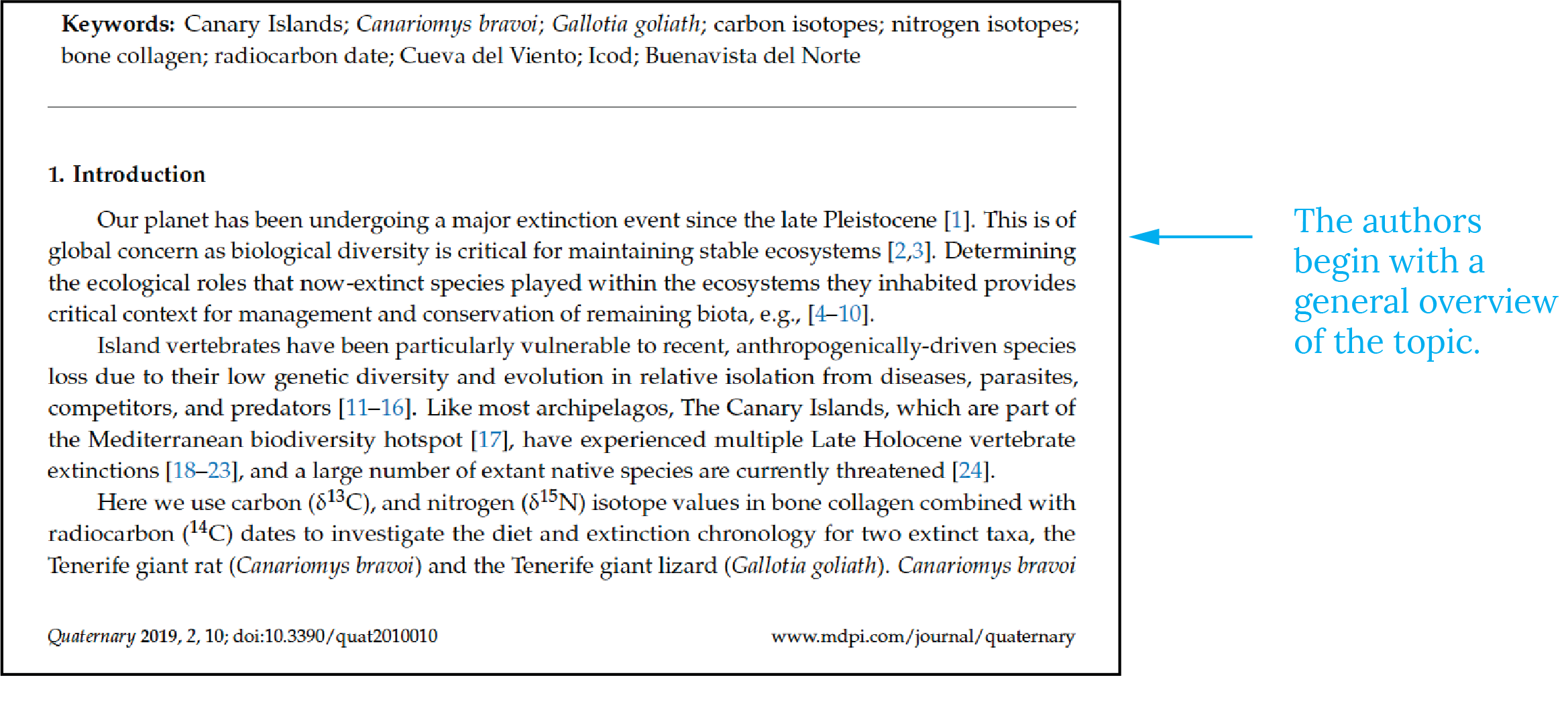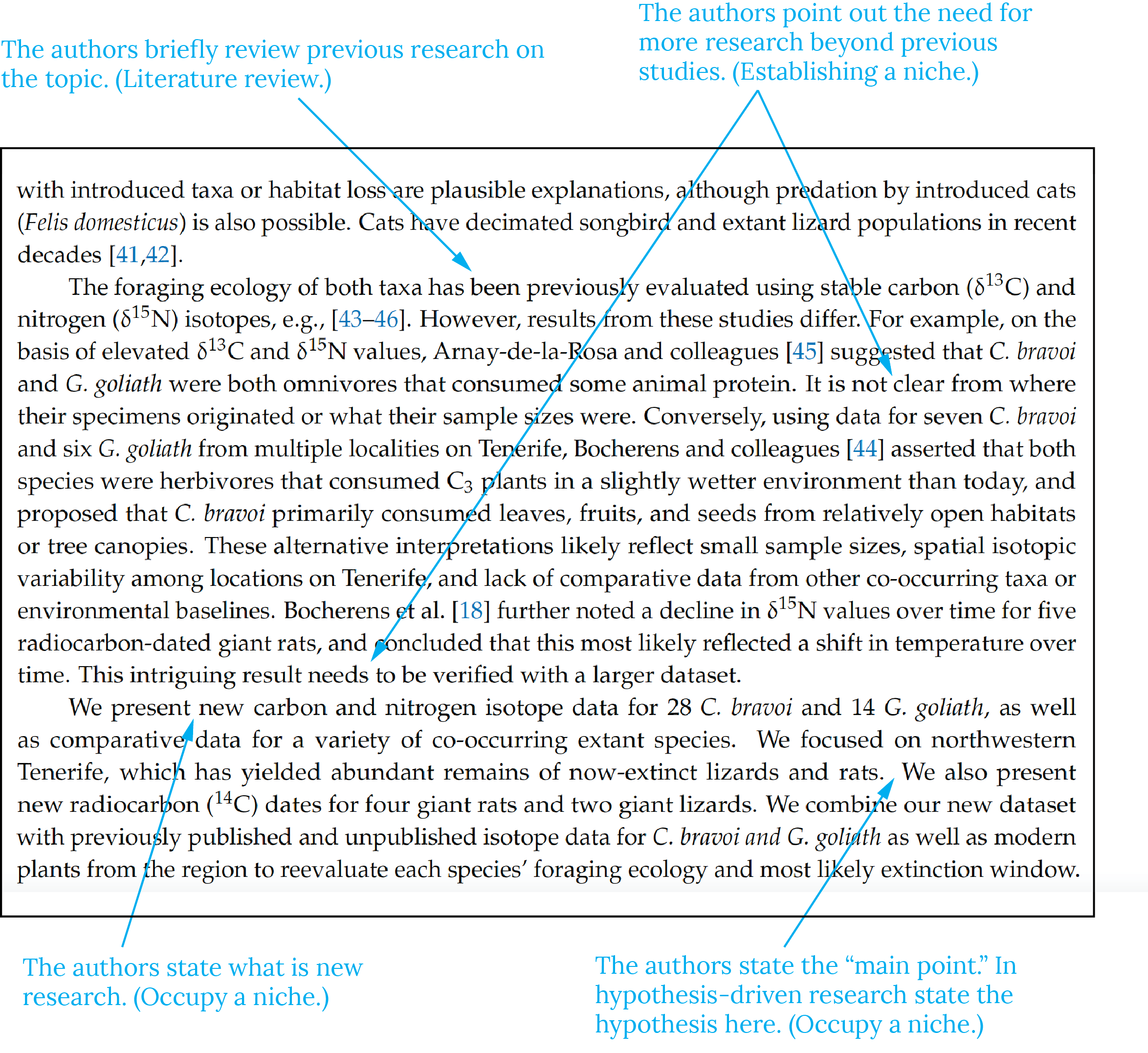3 Writing an Introduction
An introduction gives the reader the “why” the document was written. It provides readers important context for understanding your writing. For example, what was the research question or experiment that led to the creation of the written document? In general it will contain a statement of purpose, a hypothesis or thesis, and define the scope of the document—what it is or is not about. Of course there will be background information, but how much or how little will depend on the audience. A specialist in your field will need less background information than a general audience.
In science documents, the introduction often follows what is known as the Creating a Research Space (CARS) rhetorical pattern (Swales 2012). There are three sections or moves in a CARS: 1) Establishing a Territory, 2) Establishing a Niche, and finally 3) Occupying the Niche.
3.1 Establishing a territory
Establishing your territory is like announcing your topic to your readers. You also want to explain to the readers that your paper is important. To do this first you need to do more than just announce the topic, you need to give some context to your topic. Put your research or experiment into a wider context either by giving a general overview of the of the topic or by reviewing previous research. Reviewing previous research is called a literature review and is very important in writing in the sciences. See section 9 for more information on the literature review. See Fig. 2.3 for an example of establishing your territory.

3.2 Establishing a Niche
A niche is the specific research question or topic that your document addresses. In the example paper by Crowley et. al. (2019), the general topic is the extinction of vertebrate animals living on islands (Fig. 2.4). The niche, or specific topic, is the extinction history of a particular giant rat and a giant lizard in the Canary Islands.
When establishing your niche ask what is missing from previous research. Is there a gap or something that needs more research or verification? Also include briefly what methods of analysis are used for testing, validation, etc.
Writing tip: make a clear argument for the value of your particular research; e.g., what are the gaps in research that your study addresses?

3.3 Occupying the Niche
Here you announce how your study will contribute new knowledge or verify previous knowledge. You also state your hypothesis or thesis in this part of the introduction. Make clear the links between problem and solution, question asked and research design, prior research and your experiment.
Finally describe the organizational structure of the paper. (See Fig. 2.4.)
Writing tip: here are some ways to occupy your niche (notice all of these prompts are in present tense):
- The aim of this paper is
- My main purpose is
- My primary objective is
- This paper reports on the results of
- This paper primarily focuses on
When occupying your niche you can state either your thesis or hypothesis. A thesis is a statement or claim that you make about a subject and tells the reader your viewpoint. A hypothesis, on the other hand, is a tentative answer to a question, one that must be tested through experimentation.

